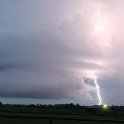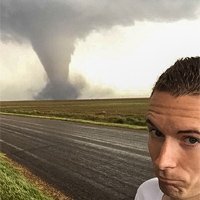Search the Community
Showing results for tags 'Severe Weather'.
-
The boring season continues here but the first two weeks of Met summer look favorable as far as us not roasting goes. The 6-10 day and 8-14 day outlook favors BN temps and near to bn precip. The first two days of met summer have produced low 70s yesterday and only mid-60s at 1pm here with rainfall both days. The countdown is on until the first true cold front of fall.
- 689 replies
-
- 1
-

-
- heat
- thunderstorms
- (and 7 more)
-
Now the dreaded season (for me) is upon us. Heat, storms, flooding and waiting on that first cold front in September to arrive and seeing those first lows in the 40s. I don't know what the summer will bring, but we know it will be hot and humid. Severe season is already off to a bad start with the tornado outbreak that spurred a lot of fatalities last week. I know it can't be avoided but I hope we don't have any more this spring.
- 295 replies
-
- 4
-

-

-
- severe weather
- frosts
-
(and 5 more)
Tagged with:
-
This is my first Forum & Post here, but there is a chance for severe weather across Kansas, Far Southern Nebraska, & into Missouri with up to Tennis Ball sized hail in Kansas, up to 70 mph winds, and a Tornado threat . . . It's May, & severe weather season is in full swing!
-
- may 2021
- storm season
-
(and 1 more)
Tagged with:
-
Uncertain, but at least one other on our forum has been onto the potential for a couple of days and I agree. Instability in low level WAA (strong warm front) beneath a decent nw flow mid level jet should permit a couple of episodes of nw flow severe thunderstorms. The first, sometime late Wednesday or Wed night through PA and possibly western NJ (plus see SPC D3 issued early Monday morning). I didn't expect to see a Marginal risk this far east into NJ but it is possible and I defer to the SPC D3. The second episode sometime Thursday, when it appears the risk shifts into our area. Best axis Thursday? Suspect close to the warm front which should be se NYS/NJ/ne PA. It's late in the season for this this... so I express a little caution for this possible late summer convective event. 640A/24
-
As the pattern over North America shifts, an extended period of potential severe thunderstorms targets the central U.S. Although this update covers May 6-10, thunderstorms are ongoing today (May 5th) and were prevalent in prior days as well. The difference here is that we are gradually starting to see more and more potentially potent setups on the horizon. Wednesday, May 6th: This day has been on the radar for a while and things are coming into somewhat better focus. As shortwave energy pivots from the High Plains to central/northern Plains on Wednesday, an area of surface low pressure will develop. With more forcing in place than prior days, that alone signals an enhanced severe weather threat. — By Wednesday afternoon, a portion of the surface low should be crossing over from far eastern Colorado into western Kansas. The strongest forcing should reside from northwestern Oklahoma into central Kansas. However, the greatest instability will likely be displaced further south from central Oklahoma down into north Texas. Partial to considerable cloud-cover will tend to limit the amount of destabilization that takes place. That combined with modest flow at 500mb, progged to be on the order of about 35 to 45 knots, will tend to limit the extent of the severe weather potential. The surface low itself is also a bit elongated. If it were more concentrated and also deeper, that would signal a greater severe thunderstorm potential. Nonetheless, with a tongue of 1,000 to 2,000+ J/kg CAPE, favorable speed and directional shear, and some forcing aloft should favor at least scattered severe thunderstorms by mid to late afternoon. — In terms of severe threats and the areas to watch… It comes down to northwestern Oklahoma into central Kansas for what should be the greatest severe threat. More isolated severe storms are still possible along a dryline down into western and central Texas. Large hail, perhaps very large in a couple of storms, appears to be the most significant risk. Damaging winds will be possible, especially into the overnight as storms may tend to merge into lines. There is a tornado threat, which should be maximized during the early evening hours, as the low level jet ramps up. As has been the case many times this year, while there is an evident tornado threat, the intensity and duration of any tornadic storms will be dampened somewhat by the limiting factors mentioned above. There is a fairly good likliehood that multiple tornadoes (but not a major outbreak) will be reported late Wednesday afternoon into Wednesday evening. Thursday into Friday, May 7th and 8th, also provide some severe weather threat, but in a more isolated and sporadic nature. Upper level heights should remain fairly neutral through the period with no significant forcing noted in the models. Each day is likely to feature moderate instability and at least marginally supportive wind shear for supercell thunderstorms. The corridor for this period should be narrowed in on the Texas panhandle, portions of interior Texas and into Oklahoma. While some severe threat may nudge into portions of Kansas, the greatest (still somewhat limited) threat should hang back further south. Each day, storms may produce large hail with some damaging winds and a few tornadoes. — Each day, watch for a few things: First, where is the greatest instability? If cloud-cover and convective debris are limited during the morning, expect a somewhat enhanced severe weather threat during the afternoon. Also, look for any outflow or other mesoscale boundaries that can be the focal point(s) for storm development. Finally, notice any upper level perturbations, even if seemingly minor, as they could provide just enough forcing to locally increase the severe threat. Saturday, May 9th has the potential, but the keyword is potential, to be a significant severe weather outbreak with numerous tornadoes. The overall pattern is favorable, as a trough swinging from the Four Corners region to eastern Colorado/New Mexico by late-day will provide ample forcing from the High Plains into portions of the central to southern Plains. Caution must be applied when looking at the analogs, but there is a fairly strong signal from the analogs that favors widespread severe thunderstorms and at least isolated significant severe events, including strong and/or long-track tornadoes. — Now, even though some major events show up in the analogs, there are a few limiting factors that will not favor a high-end outbreak. While the flow and forcing increase aloft, 70-80 knots at 300mb and 50-60 knots at 500mb will fall well short of an event such as 4/14/12, which showed up as a GFS-based analog. As far as instability, even though moderate CAPE values are predicted, we’re not looking at strong to extreme instability. There seems to be a common theme, with this week especially, that the atmosphere is not quite taking full advantage, resulting in a less extreme “than possible” setup. — With all of this said, even if the timing is not exactly right, and the timing looks pretty favorable right now, severe thunderstorms are strongly favored on Saturday. What will be the difference between a low-end event and a more significant outbreak will come down to mesoscale details. What also favors severe weather on Saturday is how the models, overall, have been in very good agreement with the general setup on Saturday for quite some time. The focus on Saturday ranges from north Texas through much of Oklahoma and Kansas, to perhaps as far north as portions of Nebraska. All severe weather modes are anticipated, with an enhanced risk of tornadoes. Sunday, May 10th is a bit further out there, but yet another severe day is quite possible. Details are a bit more muddled, as the evolution of Saturday will have a sizeable impact on what transpires on Sunday. The threat zone inches somewhat east, ranging from portions of Texas up through central and eastern Oklahoma, eastern Kansas and perhaps into portions of Missouri and Arkansas. In summary, expect severe weather threats for the rest of this week and likely through most of this weekend across the central U.S. At least a few severe thunderstorms are expected each day, with scattered severe storms on Wednesday and perhaps a mode widespread and significant event on Saturday. Tornadoes are possible each day, but the day with the likelihood for the most tornadoes is also Saturday. In terms of storm chasing, there should be many quality opportunities to get out in prime real estate, from the High Plains into the Plains west of I-35. With the threats covering a long period over some similar areas, it may be worth while to hunker down and start thinking of possible targets or even just places to stay (if you’re planning a multi-day trip). Without giving too much away, and since details may change, I tend to favor a corridor from the Texas panhandle into southwest and central Kansas. Climatology also favors this zone for the greatest severe weather threat and trends this year have kept the dryline a bit further west, mainly across these areas, during most events.
-
The United States has a greater frequency of tornadoes than most other counties. For many factors, the vast majority of tornadoes occur east of the Rocky Mountains across the continental U.S. Although the central and southern Plains region is widely considered to be "Tornado Alley," there are other areas that see just as many tornadoes, if not even more. The two graphics below are adaptations of NOAA/NWS SPC graphics found in their Tornado Environmental Browser. A broad area from the east slopes of the Rockies east to the west slopes of the Appalachians typically see the most days with tornadoes per year. Two local maximums can be identified in northeastern Colorado and central Florida. While these areas may see numerous tornadoes in any given year, they are generally low on the EF-scale. The central Appalachians feature a local minimum of tornadoes, but as one travels east, the frequency of tornadoes increases. While terrain by itself will generally not have much of an effect on a tornado, especially a significant (EF/F-2 or stronger) one, there are reasons why terrain affects tornado frequency. In the Plains, lee cyclogenesis combined with a surge of warm, moist air from the Gulf of Mexico and drier air from the Rockies tends to create a favorable setup for severe thunderstorms and tornado development. Across the East Coast, there is less real estate to work with when considering the proximity to the Atlantic Ocean. Also, wind out of the south to southeast in the lower levels will often mitigate the risk of severe thunderstorms, especially in the spring and early summer months from the mid-Atlantic region into the Northeast. The placement of a "Bermuda" high and/or a "southeast ridge" of high pressure will tend to limit the formation of strong non-tropical low pressure systems along the East Coast during the warmer months, as the jet stream is often displaced further northwest. The frequency of days with significant tornadoes is in some ways similar to, but also has differences in comparison with the frequency of days with all tornadoes. While portions of Colorado and Florida may see the most tornadoes overall, there are two distinct areas that feature a much greater frequency of significant tornadoes. The southern Plains into Dixie Alley (lower to mid-Mississippi Valley) will on average experience the most significant tornado outbreaks. Here, there are three factors that are probably most responsible for this. First, their proximity to warm, moist air from the Gulf of Mexico fill favor higher dew-points and greater instability. Second, the tornado season is a bit elongated here. While April into May have featured the most significant tornadoes in Dixie Alley, the late fall into winter months have also included several major tornado outbreaks. Finally, there may be at least some influence from tropical systems. While tropical storms and hurricanes often do produce tornadoes, it should be noted that most of these tornadoes are generally not significant. Eastern Nebraska into the Midwest also averages an elevated number of days per year with significant tornadoes. Here, while the tornado season typically peaks in June, at least some fall tornado events have spawned significant tornadoes this far north. In 2013, October 3rd-4th recorded six significant tornadoes from eastern Nebraska into Iowa, with the major tornado outbreak of November 17th featuring 32 significant tornadoes in the Midwest. Other noteworthy observations: Missouri is an interesting case. The western portion of the state is often considered to be in tornado alley and some maps will place southeastern Missouri in Dixie Alley. The state has seen plenty of significant and even violent tornadoes, with the Joplin tornado of 2011 being one of the more recent examples. However, a small section of central Missouri features a local minimum in terms of both tornadoes and significant tornadoes. One possible explanation can be their location being in a "dryslot" of sorts for tornadoes. For storm systems developing just east of the Rockies, the eastward extent of associated severe weather will often fall short of central Missouri. Likewise, systems developing in the lower Mississippi Valley often form a bit too far east to target central Missouri with the most tornadoes. West Virginia has less tornadoes than most states east of the Rockies. One factor that immediately comes to mind would be the population density and terrain, which may limit some tornado reports. However, their location along the Appalachians certainly plays a role in the lower frequency of tornadoes. The higher elevations will typically have less instability. Likewise, moisture pooling will typically favor higher dew-points west and east of the Appalachians, leaving West Virginia in another tornado dryslot. According to the NWS, West Virginia has no recorded EF/F-4 or 5 tornadoes. With that said, a long-track F-5 tornado in southeastern Ohio narrowly missed passing into West Virginia before lifting. Also, an F-4 tornado that dropped southeast of Pennslvania into Maryland also lifted shortly before it would have passed into West Virginia.
-
Hail can be a weather enthusiast delight during the Summer time (perhaps it reminds them of snow?). Unfortunately, forecasting hail size can be a bit of challenge. One method that I use is VIL Of the Day (VOTD). It was developed by the NWS back in the 90s. It purely relies on temperatures aloft and while simple, does a surprisingly good job. Obviously there are some limitations, but I will get to those in a minute. The calculation is straight forward and is as follows: VOTD = 750 / [(h5T+h4T) / 2] where h5T and h4T are the absolute values of the 500mb and 400mb temperatures respectively. The VIL value given from this equation is the approximate value at which you can expect 0.75” diameter hail stones to fall. 0.75” was chosen because this used to be the hail criteria for a severe thunderstorm. For operational purposes, the lower the expected VOTD the higher the large hail potential you can expect. I like to use 40 g/m^2 as a rough baseline in the Summer time. For those that are not familiar with VIL (Vertically Integrated Liquid), it is a radar product that operational meteorologists use to locate areas of heavy precipitation and hail. It is available in real time in all GR-LevelX products and some places on the internet (Weather Underground, etc). See the wiki page for a brief overview. Now back to the limitations of the VOTD approximation. It is best used for regular thunderstorms and not those with established mesocyclones (i.e. supercells) … although honestly it still works fairly well on most supercells we see around here. In storms with well-organized and established mesocyclones, there are additional mesoscale lifting mechanisms at work that can work to produce huge hail more efficiently than what you would tend to find in your average non-supercellular severe thunderstorm. Keep in mind that the VOTD can change as the thermal profile aloft changes. Check forecast soundings (remember, there is more than 1 model) for the afternoon ahead instead of relying solely on the 12z observed soundings. Lastly, VOTD gives you the VIL value for 0.75” hail stones and tells you nothing about maximum hailstone size, etc. I have attached a calculator that I wrote to help me compute VOTD quickly. I wrote it a while back, it’s ugly, it’s written in FORTRAN, but it does the job! votd.zip
- 3 comments
-
- severe weather
- hail
-
(and 3 more)
Tagged with:



